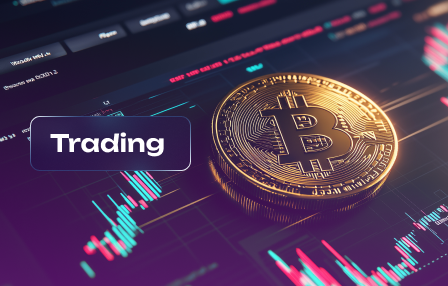The Role of OTC Trading in Crypto Price Manipulation
March 1, 2025
To navigate the complexities of market fluctuations, focus on the nuances of off-exchange transactions. These mechanisms play a pivotal role in determining liquidity and can significantly influence asset valuation. By engaging in these trades, participants often operate beyond conventional platforms, leading to varied outcomes in market stability.
Market participants must remain vigilant about how large-volume trades might sway overall sentiment and lead to abrupt shifts in valuation. The absence of stringent oversight allows for scenarios where entities can strategically execute orders, thereby affecting perceptions of worth without the transparency typically associated with centralized exchanges.
Enhancing awareness of regulatory frameworks is essential. As authorities tighten their grip on trading practices, the balance between maintaining sufficient liquidity and ensuring fair market conditions becomes increasingly delicate. Understanding these dynamics can empower investors to make more informed decisions while mitigating risks associated with sudden price movements.
Understanding OTC Trading Basics
Recognize the fundamental role of over-the-counter transactions in enhancing market liquidity. These private deals allow large institutional investors to acquire substantial amounts of assets without causing significant price shifts in the open market.
Regulatory frameworks governing these transactions vary by jurisdiction. Compliance with local laws is essential to mitigate risks associated with illicit activities, ensuring a stable trading environment.
In this context, participants should seek reputable counterparties. Engaging with established firms reduces the likelihood of manipulation and fosters trust among market players.
Moreover, monitor trading volumes and patterns closely. Unusual spikes or drops may indicate hidden activities that can affect asset valuation. Transparency is key; therefore, platforms enabling these transactions should provide clear reporting mechanisms.
Ultimately, understanding the dynamics at play in the OTC sector empowers stakeholders to make informed decisions, minimizing exposure to potential risks while maximizing opportunities within the broader financial ecosystem.
Market Dynamics of OTC Transactions
Monitor liquidity levels closely. OTC deals significantly influence market depth, allowing large trades to be executed without drastically affecting asset valuations. This mechanism minimizes slippage, providing a smoother experience for high-volume participants.
Understand the role of information asymmetry. Limited access to trade details creates opportunities for informed traders to capitalize on price discrepancies. As a result, less savvy investors may face disadvantages when competing against seasoned players who leverage this knowledge.
Keep an eye on regulatory developments. Authorities are increasingly focusing on oversight in the decentralized finance sector. Changes in compliance requirements can reshape transaction dynamics, impacting both liquidity and pricing strategies within the broader market.
Analyze the correlation between off-exchange transactions and spot market behavior. Large off-market exchanges can lead to discrepancies that traders must monitor to make informed decisions. Recognizing patterns between these two venues can enhance strategic positioning.
Utilize data analytics tools for better insight into trading activity. By examining transaction volumes and timing, you can identify trends that may signal imminent market shifts. Understanding these indicators is crucial for optimizing trading strategies.
Identifying Price Manipulation Tactics
Monitor volume spikes relative to typical activity. Sudden increases in trade volume can signal orchestrated moves designed to influence asset value. Analyze transaction patterns–unusual buy or sell orders often precede rapid fluctuations.
Watch for pump and dump schemes. A group may artificially inflate an asset’s price through coordinated buying, then sell at the peak, leaving others with losses. Identify projects with low liquidity; these are more susceptible to abrupt swings caused by single large transactions.
Scrutinize social media sentiment. Misinformation campaigns can create buzz around specific assets, leading to irrational market behavior. Assess the credibility of influencers promoting certain coins before engaging.
Evaluate bid-ask spreads. A widening spread can indicate uncertainty or attempts to manipulate market perception. Consistent discrepancies between market prices on different exchanges may reflect manipulation efforts as well.
Keep an eye on regulatory announcements. Changes in laws or guidelines can trigger volatility, often exploited by those seeking profit. Awareness of the regulatory environment helps anticipate potential moves in asset values.
Regulatory Challenges in OTC Markets
Enhance regulatory clarity to mitigate risks associated with market manipulation in over-the-counter venues. Establishing a framework that defines the roles of market participants can streamline compliance efforts while increasing transparency.
Implement robust reporting mechanisms for large transactions to track unusual trading patterns effectively. These systems should provide real-time data analytics to identify potential irregularities, fostering a culture of accountability within the market.
Encourage collaboration between regulators and industry stakeholders to address liquidity issues. By understanding how trades are executed off-exchange, authorities can better assess the overall health of the ecosystem and its vulnerability to manipulative practices.
Develop standardized guidelines across jurisdictions to minimize discrepancies in regulatory approaches. This uniformity will help prevent traders from exploiting loopholes that could lead to price distortion, ensuring fairer competition.
Promote education initiatives targeting both institutional investors and retail participants about the inherent risks of these transactions. A well-informed market participant base can reduce the likelihood of being drawn into manipulative schemes.
Advocate for the implementation of advanced surveillance technologies that utilize artificial intelligence to monitor trading activities continuously. Such systems can automatically flag suspicious behavior, thereby enhancing the integrity of the market.
Finally, emphasize the significance of maintaining open channels of communication between regulators and market players. Continuous dialogue can facilitate swift responses to emerging threats, preserving liquidity and stability within this segment of finance.
Strategies for Mitigating Risks
Implement robust due diligence processes. Verify the legitimacy of counterparties to reduce exposure to fraudulent schemes.
- Utilize Smart Contracts: Leverage programmable agreements to automate transactions and ensure compliance with predetermined conditions, enhancing transparency.
- Employ Escrow Services: Secure funds during transactions through trusted escrow services, minimizing risk of non-delivery or payment disputes.
- Diversify Liquidity Sources: Engage with multiple liquidity providers to avoid reliance on a single entity, reducing susceptibility to price volatility.
Establish clear pricing mechanisms. Develop frameworks that reflect fair market value, minimizing opportunities for distortion.
- Regular Audits: Conduct frequent assessments of trading activities to identify discrepancies and ensure adherence to internal policies.
- Transaction Limits: Set caps on trade sizes to limit the potential for significant price shifts and protect overall market integrity.
- Market Surveillance: Implement real-time monitoring systems to detect unusual patterns indicative of potential fraud or irregularities.
Foster collaboration with regulatory bodies. Actively engage in discussions aimed at establishing standards that promote fairness and transparency within the marketplace.
- Advocate for Clear Regulations: Support initiatives that define operational parameters, creating a safer environment for all participants.
- Participate in Industry Groups: Join associations that focus on best practices and ethical behavior, reinforcing commitment to responsible conduct.
Educate stakeholders. Provide resources and training sessions to enhance awareness of risks and equip participants with knowledge to make informed decisions.
- Workshops: Organize events focusing on risk management strategies tailored to the specific needs of different market actors.
- Guides and Publications: Create informative materials detailing effective practices for mitigating risks in transactions and maintaining market stability.
The combination of these strategies will create a more resilient trading ecosystem, ultimately fostering trust among participants and stabilizing market dynamics.



